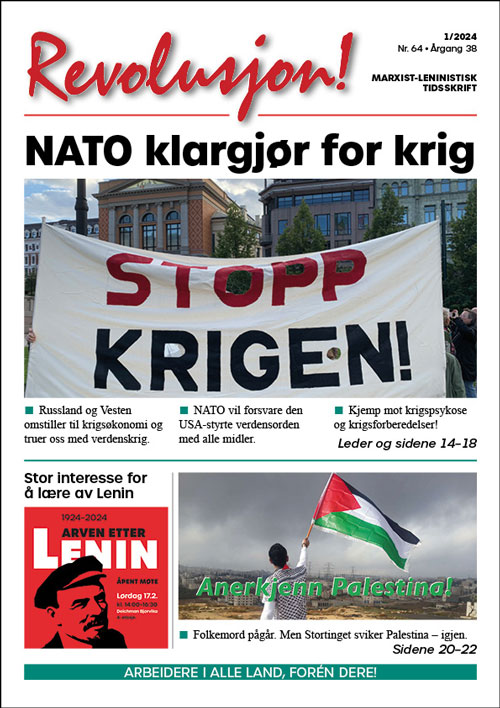In the following, we wish to draw attention to some specific points that are not emphasized in the document The working class today.* Our remarks must not to be regarded as final conclusions, but rather as considerations we feel need to be investigated and discussed further.
1.1. New appearances of commodity production and the implications regarding the class analysis.
Capitalism is, as stated in the document from the French and Spanish comrades, imposing itself on all sectors of society. Health, culture, relations traditionally belonging to the family sphere etc. are all being turned into commodities, i.e. products and services put up for sale.
Especially in the most developed countries, the so-called service sector is therefore rapidly expanding, and is employing vast numbers of labourers. Some of these labourers belong to the working class, while others do not.
The problem put forward is
1) what may actually be described as commodity production?
To look at, it does seem that just about anything is turned into a commodity, including social and cultural relations that formerly were not considered as such.
The massive privatisation in the sectors of health and education is apparently turning the whole process of reproduction of the labour force into a commodity. These sectors have from a Marxist point of view always been regarded as non-productive, in the sense that the labourers in these sectors have been paid for through surplus value generated from the productive sector in combination with heavy taxation on the broad masses of people. Now, these sectors appear to be generating great profits for private capital, despite the decrease in state financing.
If we understand Marx correctly, he was generally of the opinion that whatever generates profit for the capitalists must be seen as productive labour from the point of view of capitalism. On the other hand, he points out that what we today refer to as the public service sector, is financed from the surplus value created in the productive sectors of the economy.
If we look at the health sector, this is of importance in order to define which part – if any – of the employees in the health sector belong to the working class, and moreover, whether some of them even might belong to the productive sector of the working class (we think they do not, until the opposite is proved).
Some theories, mainly revisionist ones, insist that these sectors are of interest to the capitalists because of the high proportion of manual labour necessary for them to function (it is very limited how much you can automatize health care), hereby avoiding the general tendency of a shrinking rate of profit. Therefore, they say, capitalism can live on for ever by expanding its scope of activity to every sector of culture, education and health.
We are in need of profound theoretical arguments to oppose such theories.
Lets take sports as another example. In this field, especially in football, enormous profits are generated, and sports have become a de facto industry of great proportions. Football players are bought and sold like luxury slaves for tens of millions of dollars, while the exclusive rights for broadcasting football events are paid for in hundreds of millions of dollars.
The profits from this business is evident. However, to us it seems equally evident that a football player or a team as such can in no way produce exchange value or surplus value. In the sense of political economy, sports are completely non-productive. Nevertheless, vast sums of money and great profits arise from the sports arenas. How do we explain this?
As far as we can see, it turns out that the real value (or surplus value) is created not in the arenas, but in the spin-off from the events, i.e. in the building of stadiums, in the production of TV signals and transmission and so on. Therefore, there is a difference in the appearance of the commodity and the actual commodity. In other words, while the football game appears as a commodity, the real commodity lies in the productive facilities transforming it into a matter of consumption.
The same thing applies to the sex industry, where one hardly can speak of any productive effort from the prostitutes or pornographic 'actors'. The real profits lie in the film and magazine production.
These two examples, where the vast profits are only exceeded by the arms industry and drug business, prove the moral decay of capitalism in its present stage. But they also show the need of drawing a line of demarcation when we generally speak of commodity production.
Does this have any impact on the question of class analysis? Yes, it does. If it is so that the industries mentioned above are productive, this implies that football players and prostitutes are wage earners, labourers and perhaps even part of the working class. The prostitutes in Germany have, for example, demanded that they be referred to as 'sex workers', and not as hookers. Many leftist and revisionist currents accept terms like these in their class analysis, which incorporates almost everyone as wage earners.
Such a conclusion is in our opinion absurd, both from the view of criteria for defining the working class, and also from the view of Marxist political economy.
1.2 The increased organic composition of capital and the creation of surplus value prior to the process of mass manufacturing
Is the thesis that the fundamental tendency of capital is the substitution of complex work by simple one and the substitution of living work by dead work valid in all fields? The automatization and use of robots in production are proof of the latter. It is also true that the term of simple work is relative, depending on the level of culture and education in a specific country at a given time.
Still, the question should be raised whether this applies to present-day industry. In the advanced countries, it certainly seems clear that brain work is of equal importance to manual labour. The labour market in these countries is becoming clearly divided into two sectors, one labour force for complex, mainly intellectual, work, and another for simple, mainly manual, work.
When we regard the situation from the view of political economy, it also seems clear that value and surplus value in the process of production increasingly is being created in the process prior to the actual mass production (where automatization greatly has reduced the need of manpower). This may have implications beyond the general tendency of growth in constant capital and the relative decrease of variable capital.
What is clear today, is that science has become an integrated part of production. Formerly too, there have been engineers and technicians, designing products and putting up plants for manufacturing. However, their contribution to the total mass of produced (exchange) value was relatively minor. Tens of thousands of workers dominated the production line.
In many industrial sectors today, this appears to have undergone a change. Of course, we here speak of great differences between branches of industry. But let us take an example:
In the software industry (like Silicon Valley) vast resources and hundreds of employees spend their time designing and trying out products targeted for mass consumption (as well as more limited business solutions). This process, which we must note takes place prior to the mass manufacturing, is highly productive. When the software is released from the programmers and designers, a considerable amount of the surplus value is component in the product before the phase of mass production is entered. The production line for the market is generally highly automatized, where computers and robots copy the program onto CDs for final retail and distribution. The need for workers in the line of mass production is limited.
Of course, this hi-tech industry is not yet typical for industry as a whole. But many of the same tendencies can be seen in the automobile industry and other places, where design and planning prior to the actual mass production have become a decisive and sometimes even dominating part of the process of production itself.
These observations on our part may not be accurate and profound, but we think that some of these aspects deserve to be analyzed more deeply.
1.3. Labour aristocracy
Another reason for digging into these problems, is the need of a clearer understanding of the social basis of reformism within the working class itself. As has already been put forward by several parties of the Conference, the lay-offs in industry in the developed capitalist countries, has also affected and diminished the traditional labour aristocracy, in numbers as well as in influence. But the bribery of a better-off section of workers still prevails, and the question arises whether it can be said that a new labour aristocracy is developing in other branches and sectors, either as a supplement or as a substition for the traditional outlook of this strata.
We pose the question, without yet having definite answers.
(In connection with the new edition of Lenins work on imperialism, it is relevant to mention Lenins quotation of the reformist economist Hobson, who pointed out the future possibility of the workers of Western Europe deteriorating into a mainly non-productive mass of relatively well-paid workers and servants, mainly occupied in delivering services to the parasites of the ruling class who have extracted their profits from Asia and Africa. In some regions of Europe, these phenomenon can surely be observed today.)
1.4. The female working class
The increasing role of women as an active section of the working class must not be neglected. The women have in many cases proved to be an active force in the struggle against capital, sometimes more militant than their male co-workers. This is understandable; the women are even more oppressed and are compelled to take responsibility for their families and children as well as being labourers. Even in those countries where the slogans of women liberation have been sung for years on end, and where women's rights are relatively acknowledged, like in Norway, the difference in wages between male and female labourers and employees still persists.
These circumstances make the women willing to go in the forefront raising demands of equal pay and demanding a shorter working day.
The problem is that the women and the sectors where they predominate (like in the health sector, child care etc.) lack experience in trade union organization and struggle. Organizing the women is in itself an issue of importance, as it is known that half of the female labourers only work part-time, a fact that makes it difficult to organize and develop an advanced trade union consciousness.
The comments and considerations above do not give any final conclusions. These are questions that just have been raised in our native discussions, and we are far from having discussed them thoroughly, not to speak of having any final answers. We offer theese issues to the participants of the conference in case they might be considered relevant for the evolving discussion. Of course, we are happy to receive comments and criticism.
* This refers to the document presented by the PCOF of France and Octubre of Spain.

